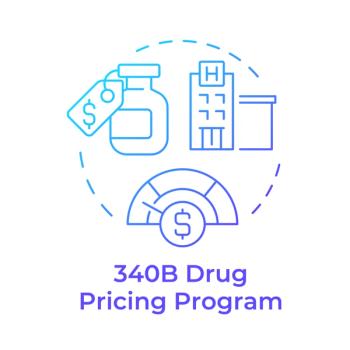
COVID-19 Has Changed Cancer Care — For the Better
The pandemic has led to the adoption of telehealth and greater access to care through apps.
Roughly
Beyond the added difficulty of accessing care, many treatments for cancer compromise the immune system, making it easier for patients to catch a contagious respiratory virus and forcing many into extreme isolation. A recent study published in
In addition to the physical aspects, a
The pandemic has forced oncologists to completely rethink our interaction with patients, from finding creative ways to overcome the clinical challenges associated with delivering care remotely, to being more in touch with, and better supporting, our patients’ emotional health. As difficult as this year has been, I believe that many of the changes that have emerged — acceleration of telehealth, rethinking of the patient experience, adjustments to treatment — will become permanent tools to deliver improved patient care and outcomes for years to come.
Acceleration of telehealth
Like other practice areas, oncology saw a rapid increase in telehealth services. While some forms of cancer treatment require an in-person visit, such as infusions, teams have identified remote opportunities along the care journey, such as conducting symptom checks. The truth is, aside from in-person tests and treatments, the ability to check in, monitor and manage a patient’s care virtually is as effective as face-to-face, while more convenient and comfortable for the patient.
Many patients now meet with their oncologist virtually to discuss their treatment plan, progress, questions or concerns, then are referred for lab work and other necessary tests to an office near their house so travel time and exposure can be reduced.
As we have seen the benefits of telehealth for our patients, physicians and care teams are starting to have the conversation about how to further expand at-home and remote cancer care, such as delivering home infusions. While we aren’t there just yet, we have opened up the possibility for new ways of delivering quality care that is more accessible, efficient and safe for our patients.
Rethinking the patient experience
For many cancer patients, the physical and emotional support of family and friends is critical as they face their diagnosis and go through treatment. But, as hospitals and offices restrict the number of people, most patients are facing appointments alone – not just without family, but the pre-pandemic camaraderie that was often a part of infusions, waiting rooms and cafeterias. Today, in-person visits are about speed and the reduction or elimination of risk, not connection and support.
And this isn’t just hard for the patients. Oncology is not a field of medicine where doctors distance themselves from patients. Quite the contrary. Before COVID-19 hit, I would shake hands with and hug my patients regularly. The reality is, the news I deliver is often devastating and requires a level of empathy and compassion that, as a human, is done through touch. It’s difficult to do that behind a mask from across the room; this new reality has challenged — and continues to challenge — us all to find new ways to connect.
One way teams are finding they can provide this important support piece is through smartphone apps, where a patient can find all the resources they need – including access to a nurse or advocate who can answer questions, talk through concerns and provide additional resources if needed. Another is by helping them in the “small” ways a friend or family member used to do, such as helping to take notes during an appointment. Care teams are now filling those roles: pausing more often to allow for mental processing, making sure the patient understands the information we’ve delivered, proactively answering frequently asked questions and filling in as note-taker and paper organizer.
Adjustments to treatment
In addition to how we deliver care and support to patients, we have seen changes to treatment. For example, the FDA has approved changes to some immunotherapies, lengthening the permitted prescribing dosage in an effort to limit the amount of visits a patient needs for follow-up and refills.
For many patients, a clinical trial is part of the treatment strategy; but, like everything else, enrollment in those trials is down. The
That brings us to another frightening reality we face: Delayed diagnoses. UnitedHealthGroup looked through
We are at real risk of seeing people present with later-stage cancers that require a more aggressive treatment plan. To prepare for the months and years ahead, it’s important we prepare thoughtfully for the changes that have — and will continue to — come our way.
Prepare for telehealth to stay
According to findings of MJH Life Sciences’
It’s clear telehealth isn’t going away; therefore, clinics need to design strategies that work for their unique patient community. How can telehealth augment the care they deliver and improve the patient experience? As part of that strategy, they need to communicate to patients where telehealth will fit into their care plan, so patients know how they will receive the care and support they need throughout their entire journey.
Enhance the patient experience
Along those same lines, the patient experience needs to be thoughtfully designed and executed; clinics need to go beyond the Band-aid approach they’ve put in place during COVID-19. Things like 24/7 virtual support and resources delivered seamlessly will be critical to enhancing a patient’s experience with their care and the team delivering it.
Behind the scenes, clinics should re-evaluate integration with their electronic health records (EHRs) to ensure it allows for quality care, whether delivered in-person or virtually.
Plan for later-stage cancer diagnoses and treatment plans
Those patients who come in with later-stage diagnoses will require treatment and support plans that meet them where they are in the disease. They should be connected with the appropriate support teams as soon as possible, have access to resources that help them make necessary decisions about their treatment plan and be able to begin that regimen without delay.
Practices and care teams should be considering ways to speed the delivery of care now, so that when patients come in with advanced cancers, the time to treatment is shortened, streamlined and efficient.
Like so many other things, cancer care has changed dramatically over the past year. While those changes have been forced upon us by a global pandemic, many of them have improved the quality of the care we deliver as well as the patient experience. As we begin to get COVID-19 under control, we will see some things go back to a version of the way they were before, such as support groups and waiting room camaraderie. But we will also see improvements and enhancements to those things, such as 24/7 access to a support team through things like smartphone apps that serve as both a treatment management and support tool.
Our job as physicians is to ensure patients receive the highest quality of care available, and I believe we now have new ways to do just that.
Ankur Parikh, M.D., is a hematologist and medical oncologist and medical director at
Newsletter
Get the latest industry news, event updates, and more from Managed healthcare Executive.


















































